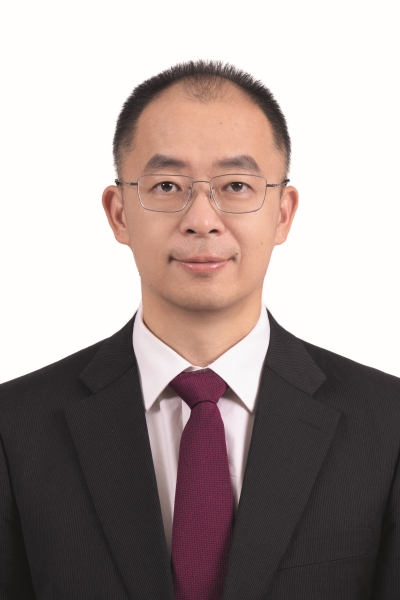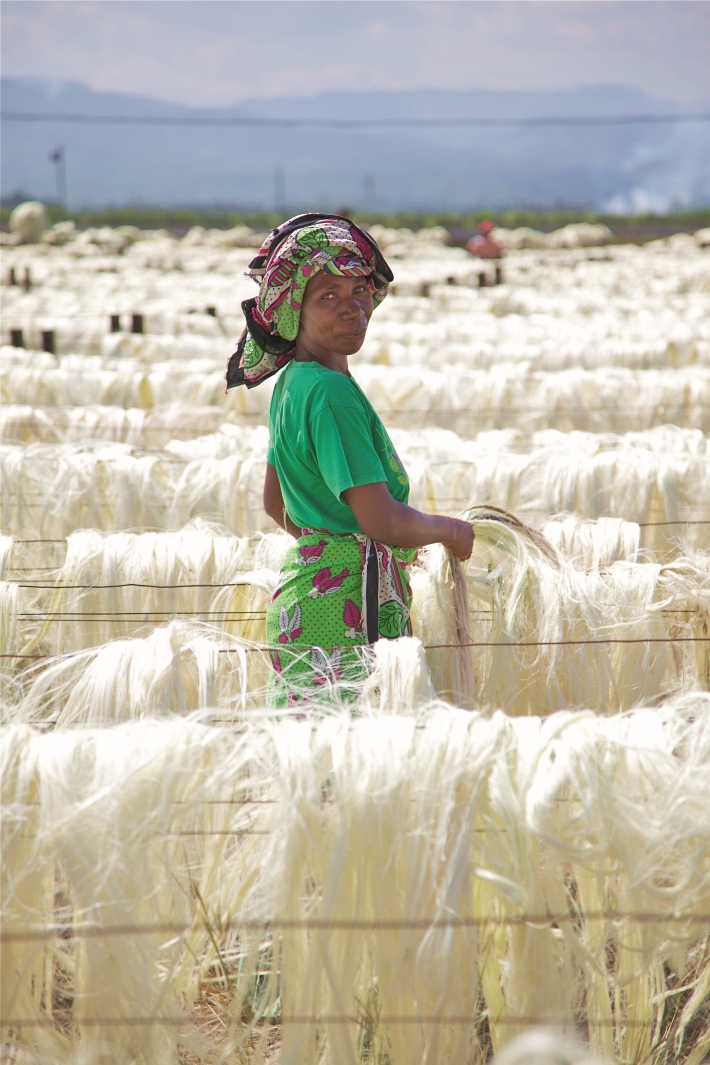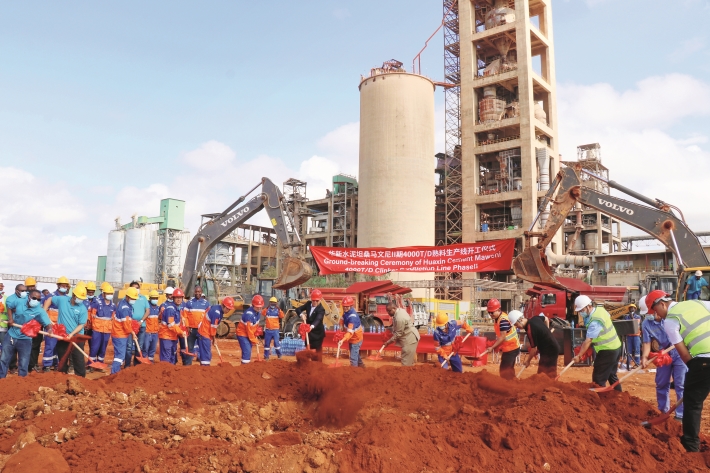|
||||||||||
| Home Top News Economy/Tech Culture/Sports China in Foreign Eyes Green Development Videos Intangible Cultural Heritages |
|
||||||||||
| Home Top News Economy/Tech Culture/Sports China in Foreign Eyes Green Development Videos Intangible Cultural Heritages |
| ChinAfrica |
| Investing in Future |
| China’s equity fund promotes high-quality development of China-Africa economic and trade cooperation |
| ChinAfrica | VOL. 16 September 2024 ·2024-08-30 |

Wang Shaodan, Chairman of CADFund (COURTESY)
China-Africa Development Fund, or CADFund, is China’s first Africa-focused equity fund aiming at promoting Africa’s economic development and industrialisation, reducing poverty, improving African peoples’ livelihood, enhancing Africa’s capacity for sustainable development, and building a community of shared future for mankind through market-oriented investment.
The creation of the fund was one of the measures announced by China at the Beijing Summit of the Forum on China-Africa Cooperation (FOCAC) in 2006. With an initial planned size of $5 billion, the fund began operations in 2007. At the 2015 FOCAC Johannesburg Summit, Chinese government announced an injection of additional $5 billion to CADFund, bringing its total size to $10 billion. It is headquartered in Beijing and has five representative offices in South Africa, Ethiopia, Zambia, Ghana and Kenya.
ChinAfrica talked to Wang Shaodan, Chairman of CADFund, about the role it plays in supporting Africa’s economic development and improving local peoples’ livelihood.
ChinAfrica: What are the major investment projects and achievements of CADFund?
Wang Shaodan: CADFund adheres to the philosophy of “sincerity, real results, affinity and good faith” in its cooperation with Africa. It has focused on the implementation of the Belt and Road Initiative (BRI) and FOCAC projects, and utilised the advantages of its shareholder China Development Bank to support China’s investment cooperation with Africa in a market-oriented manner, bringing funds, technology, talents and management experience to the local areas, and enhancing Africa’s self-development capability.
As of July 2024, the fund has made investment commitments of approximately $7.6 billion in 39 African countries. The projects cover areas such as capacity cooperation, infrastructure, agriculture, people’s livelihood, digital innovation, green development, job creation, tax revenues, and export earnings for local areas, which in turn contribute to Africa’s industrialisation, agricultural modernisation, and sustainable economic and social development.
In recent years, in the face of changes in the internal and external environment, CADFund has actively innovated and used various methods such as equity investment and debt investment to maintain its investment in Africa. It has supported a number of projects in emerging fields such as digital infrastructure, green development, China-Africa supply chain, and panda bonds, and ensured the continued implementation of key projects of concern to both China and Africa.

A local worker dries sisal fibre at a farm in Tanzania’s Morogoro Region. The farm is co-invested by CADFund and China National Agricultural Development Group (COURTESY)
How do CADFund’s investment projects accelerate Africa’s industrialisation process? What specific changes have they brought to the improvement of local people’s livelihood?
Since its establishment, CADFund has joined hands with leading companies from various industries in China to invest in a number of major landmark projects and “small yet smart” projects in Africa, effectively promoting Africa’s industrialisation and modernisation and significantly improving local people’s livelihood.
First, the fund has supported infrastructure connectivity via investments in African ports, aviation, electricity and other projects, notable among which are Nigeria’s TICT Port, South Africa’s photovoltaic power station and Ghana’s Africa World Airlines. These projects have opened economic and trade channels for the local areas and removed development bottlenecks.
In recent years, affected by the increased debt burden of local governments, some African welfare projects and infrastructure projects have faced delays, which has hampered economic and social development. CADFund has actively innovated its investment models, and through subscribing to the BRI corporate and enterprise bonds issued by enterprises, it has provided targeted support for the continued implementation of infrastructure projects such as roads, pipelines, schools and “small yet smart” projects that benefit the people in Africa, effectively solving the financing difficulties of key projects.
Second, it supports China-Africa industrial cooperation. CADFund helps leading domestic manufacturing enterprises to invest and build factories in Africa, creating production capacity for cement, glass, machinery, automobiles and electrical appliances, transforming “made in China” to “jointly made by China and Africa,” and effectively accelerating the industrialisation process in Africa.
The fund’s investments have created capacity for the production of 99,000 commercial vehicles, 700,000 air conditioners, 500,000 refrigerators, 1,000,000 televisions, and 2.9 million tonnes of cement in Africa, which will effectively improve the level of local manufacturing.
Third, it has helped to improve people’s livelihood through investment. CADFund focuses on supporting the development of weak links such as agriculture and medicine in Africa. The Tanzanian sisal farm project invested by the fund employs about 750 local people, and benefits more than 60,000 people directly or indirectly. The farm has also set up a village-level poverty reduction learning centre to share Chinese technical experience. Humanwell Africa Pharmaceutical in Mali supported by the fund’s investment is the most modern pharmaceutical factory in West Africa, with an annual output of 40 million bottles of large infusions and 30 million bottles of syrups, ending Mali’s history of not being able to produce drugs independently. The products are exported to neighbouring countries, greatly alleviating the problem of drug shortages in West African countries.

Staff work at a large infusion and medicinal syrup production plant jointly built by CADFund and Humanwell Healthcare (Group) Co., Ltd., which is the first modern pharmaceutical company in Mali and the highest-standard pharmaceutical factory invested in and built by Chinese companies in Africa (COURTESY)
CADFund has in the past focused on investments in infrastructure connectivity in Africa. Is there any change in the focus of investment now?
With the advent of a new round of technological revolution, African countries have a growing demand for the development of digital infrastructure and new forms of digital economy. CADFund actively responds to Africa’s needs. By investing in China Telecom and China Mobile, it supports and guides leading Chinese communication companies to build fibre-optic backbone networks, submarine cables, and data centres in Africa, and actively contributes to the development of local community distance education, telemedicine and other welfare undertakings.
As global resource and environmental constraints continue to increase, African countries are also seeking green transformation of their industrial structures. As a responsible investment institution, the fund has always adhered to the concept of green development in its investment cooperation with Africa, and is committed to promoting green, low-carbon and sustainable development in Africa. The South African photovoltaic power station project invested by the fund has been operating smoothly, providing about 300 million kwh of grid-connected electricity each year. The Tanzanian cement plant project invested by the fund is equipped with the most advanced dust collection equipment and waste heat power generation system, leading the green transformation of the local cement industry.
What are the opportunities and challenges in investing in Africa at present?
In terms of opportunities, Africa’s development is showing a positive trend. At present, the overall political situation in Africa is stabilising, and the momentum of economic growth recovery is gradually strengthening. The African Development Bank predicts that Africa’s GDP will grow by 3.8 percent in 2024, higher than the global average. As a key part of the Global South, Africa actively seeks strategic autonomy, enhances its voice in international affairs, and accelerates the integration process. In September 2023, the African Union (AU) became a formal member of the G20. In January 2024, Egypt and Ethiopia joined the BRICS cooperation mechanism. The African Continental Free Trade Area (AfCFTA) is developing, and is expected to form a large-scale unified market with a large population in the region, raising the growth potential of the local economy.
Secondly, China-Africa cooperation in various fields continues to deepen and develop. African countries are more willing to respond to the BRI. The AU and 52 African countries have signed BRI cooperation documents, making it the region with the most signatories in the world. The successful convening of the China-Africa Leaders’ Dialogue in August 2023 has further strengthened the strategic partnership. The upcoming FOCAC summit in Beijing will inject new impetus into China-Africa cooperation and bring new opportunities.
In terms of challenges, first, the situation in some parts of Africa is unstable, and security risks are increasing. Second, African economies are vulnerable to external factors such as commodity price fluctuations, changes in the international capital market, geopolitical conflicts, and climate disasters. Third, international competition in the African market has intensified. The US, European countries, Japan and others have increased their attention to Africa. International financial institutions are also increasing their financial investment in Africa. For example, the World Bank will lend $20.2 billion to Africa in 2023, the fastest growing region among its global business areas.

A groundbreaking ceremony for the Phase II of Huaxin Cement plant is held in Tanga Region of Tanzania on 26 July 2022. CADFund has invested in the project (COURTESY)
What is the future development direction of CADFund?
The FOCAC Beijing Summit to be held in September will set the direction for the next stage of China-Africa cooperation. Guided by the spirit of the new summit, CADFund will continue to play its role as the main platform for investment in Africa, focus on the development demands of African countries, fully connect Chinese companies with relevant African departments, explore innovations in investment and financing models and cooperation methods, coordinate the promotion of major landmark projects and “small and beautiful” projects, and increase support for more Chinese companies to invest in Africa.
In terms of cooperation methods, first, we will continue to innovate investment and financing models, and strengthen the use of various investment tools such as equity, debt and fund investment. Second, we will increase docking with the international capital market, and deepen cooperation with international institutions and local African companies. Third, we will provide high-quality value-added services to Chinese and African companies.
In terms of industry layout, we will combine Africa’s development needs and China’s industrial advantages to actively enhance the development of the industrial chain in Africa, and promote the integration and stability of the industrial chain and supply chain. First, we will link with development of the AfCFTA to innovate and promote cooperation in the fields of energy and infrastructure. Second, we will strengthen cooperation in the fields of production capacity and people’s livelihood based on local needs and strengths. Third, we will actively promote cooperation in areas such as blue economy, green development, and scientific and technological innovation, in accordance with China-Africa Cooperation Vision 2035.
| About Us | Contact Us | Advertise with Us | Subscribe |
| Copyright Beijing Review All rights reserved 京ICP备08005356号-5 京公网安备110102005860号 |